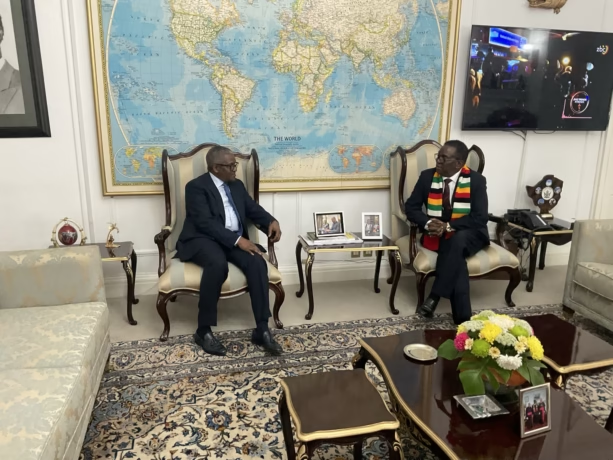
By Aldridge Dzvene | Positive Eye News
The Towards an $86 Billion Economy Conference, hosted by the Think Economic Competitive Agenda, TECA, has cast a spotlight on Zimbabwe’s ambitious march toward an upper-middle-income society by 2030. At the heart of the discussions lies a simple yet profound question, how can government, the private sector, and citizens collectively transform potential into prosperity?
Development economist Itai Zimunya emphasised that the country’s competitiveness cannot rest solely on government action. “Competitiveness should not be seen as a government responsibility alone,” he said. “It is a collective national mindset where both policy and people converge to build a minimum consensus for prosperity and growth.”
Zimunya praised recent efforts to formalise the informal sector, citing that over 100,000 small and medium enterprises, SMEs, are now tax-compliant. Yet, he cautioned against complacency, “Formalisation is far beyond just registering for tax purposes. True formalisation means small companies must be able to access money from the financial sector without the heavy burden of collateral or trade references. Most of our institutions are small but vigorous in the economy. Government must serve as a guarantor, so young entrepreneurs can rise and contribute meaningfully to national production.”
Turning to macroeconomic stability, Zimunya underscored the persistent challenge of foreign exchange volatility. “We are a U.S. dollar-based economy, and because we use the U.S. dollar, it is not enough to hedge the U.S. dollar with the U.S. dollar itself,” he said. He commended the Reserve Bank of Zimbabwe for accumulating gold reserves as a buffer to restore confidence, noting that “since 2007, the bank had been empty, and without reserves, you cannot hedge your currency against volatility.”
While monetary stability is crucial, Zimunya argued that growth ultimately depends on production and service delivery. He urged private sector actors to deepen value addition and beneficiation across agriculture, mining, and manufacturing. “Zimbabwe’s growth will depend on export earnings rather than local consumption. An easy source of money for growth will not emerge from domestic demand alone, but from regional markets like Botswana, Sudan, and Nigeria. Our export strategy must be robust, because money earned through exports is cheaper than borrowing from international financial institutions.”
Adding a critical perspective, a conference panelist, whose candid insights reflected the cynic’s lens, reminded participants that structural reforms without effective implementation risk remaining mere policies. “It is not enough to have strategies or grand plans, what matters is translating frameworks into tangible outcomes that people experience daily,” the panelist observed. “Without reducing bottlenecks, easing the cost of doing business, and ensuring accountability, even an $86 billion target will remain aspirational rather than achievable.”
The conference also explored Zimbabwe’s ongoing industrial transformation. NDS 1 and NDS 2 policies, along with the Zimbabwe Industrial Reconstruction and Growth Plan, ZIRGP, have prioritised industrial revitalisation, technological innovation, and export-oriented growth. By streamlining regulatory frameworks and customs procedures, government seeks to reduce costs and incentivise production. TECA experts argued that innovation hubs, heritage-based education initiatives, and strong intellectual property enforcement are central to creating an environment where creativity and enterprise can flourish.
Regional integration was another key theme. The African Continental Free Trade Area, AfCFTA, offers Zimbabwe access to over 1.3 billion consumers. Zimunya stressed that this market presents a strategic opportunity for export growth, investment attraction, and industrial competitiveness. “Zimbabwe must not become a supermarket for Africa,” he said, “but a producer of high-value goods that can compete on quality and technology.”
Private sector development was consistently highlighted as the engine of economic growth. TECA representatives reminded participants that a competitive Zimbabwe must be industrially and structurally transformed, with the private sector leading in job creation, value addition, and global competitiveness. “Government alone cannot build this economy, we need all hands on deck,” Zimunya said, noting the importance of collaboration across public and private sectors, urban and rural communities, and academic and industrial stakeholders.
Infrastructure investment, particularly in renewable energy, transport, and logistics, was identified as a linchpin for reducing the cost of doing business and increasing productivity. Cluster-based industrial development, focused on high-potential sectors like mining, agriculture, agro-processing, steel, and leather, was presented as a blueprint for transforming raw material production into high-value exports.
The conference concluded with a unifying message, Zimbabwe’s journey to an $86 billion economy is neither abstract nor impossible. It demands structural transformation, bold policy innovation, and collective responsibility. As President Mnangagwa wisely counselled, “Nyika inovakwa nevene vayo, Ilizwe lakhiwa ngabanikazi balo,” a country is built by its own people. For Zimbabwe, the road to shared prosperity begins not only in boardrooms and policy documents, but in the deliberate, everyday efforts of citizens, entrepreneurs, and government to turn competitiveness into measurable progress and sustainable success.
TECA’s conference reminds Zimbabwe that Vision 2030 is not a distant dream, it is a call to action, requiring unity of purpose, innovation, and resilience. Achieving the $86 billion economy will take more than numbers, it will take a nation fully engaged in its own transformation.




